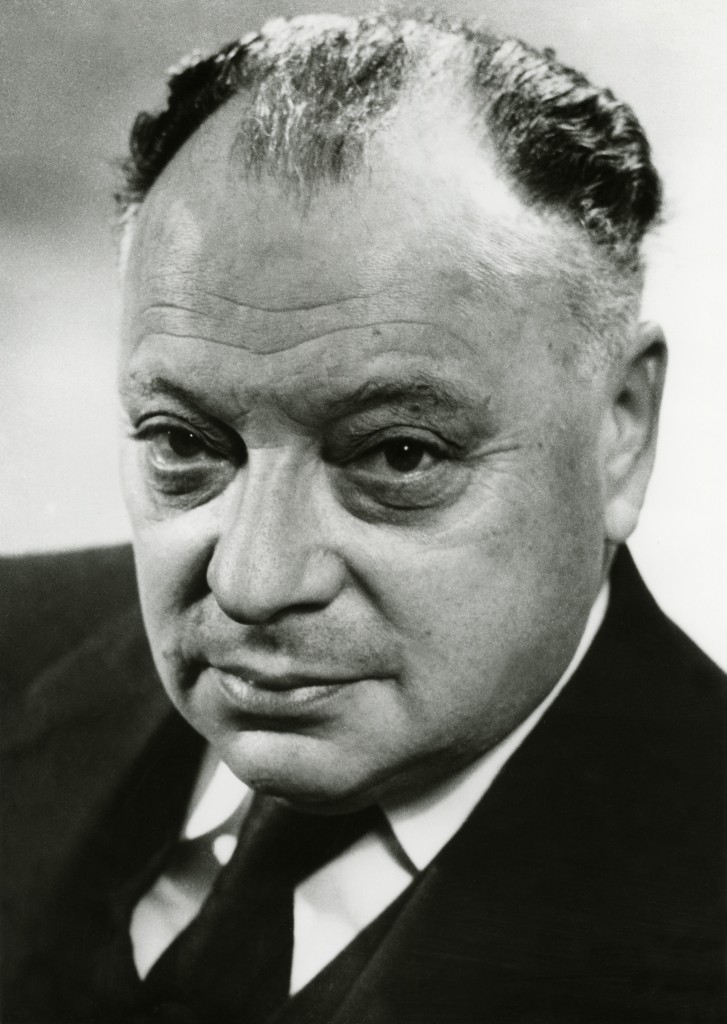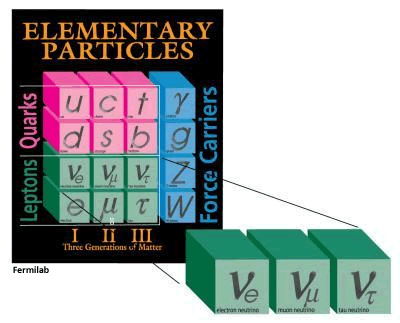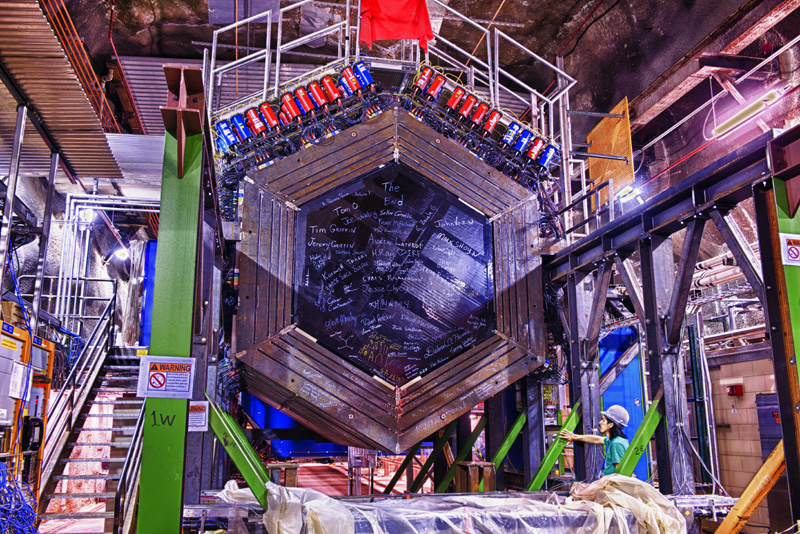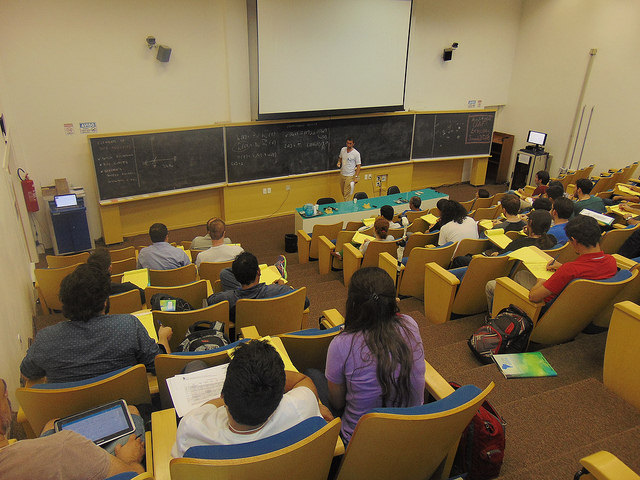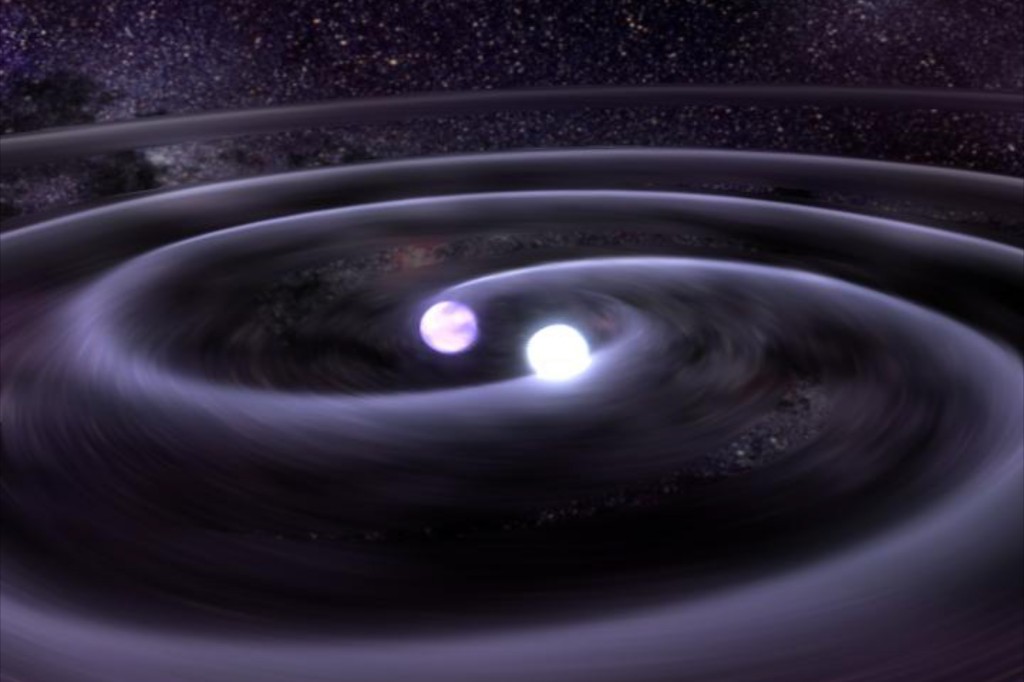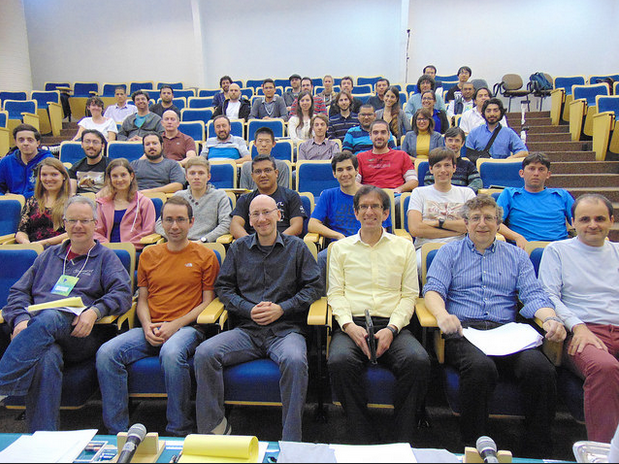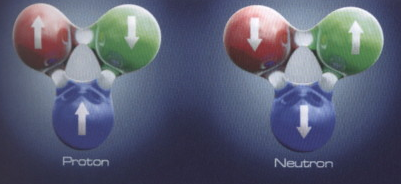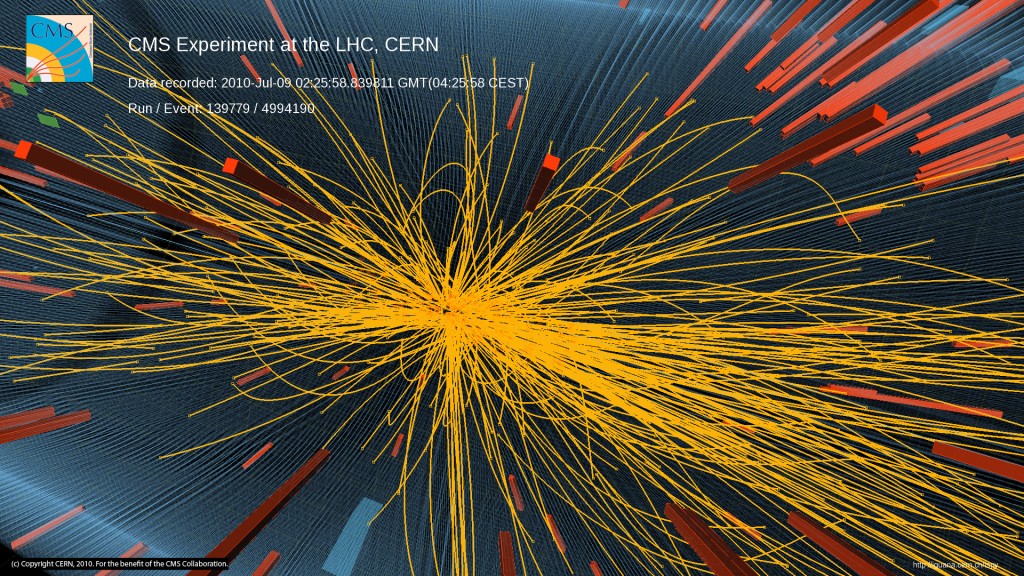Archive for August, 2015
ICTP-SAIFR hosts the International Neutrino Summer School 2015
The ICTP-SAIFR hosted, between August 17th and 28th, the International Neutrino Summer School of 2015. The event, held annually and in different countries, was attended by theoretical and experimental physicists to address different aspects related to these particles. Among them, the relationship between neutrinos and the Standard Model, and the latest experiments that are trying to produce and detect a growing number of these particles.
“Schools like this one are excellent ways to discuss fundamental questions related to neutrinos and connect and involve people with the area”, said Deborah Harris, researcher at Fermilab and member of the International Advisory Committee of the School.
History
As Harris explained in her Colloquium during the School, neutrinos were predicted for the first time in 1930. The aim was to solve a crisis in the Particle Physics area: in certain experiments with electrons, scientists noted that the final energy was lower than the initial energy. The explanation, suggested by Austrian physicist Wolfgang Pauli, was that the energy was in the form of a particle that could not be seen and did not interact with matter – the neutrino.
Pauli’s prediction was confirmed more than 20 years later. These particles were detected experimentally and in three different types, or flavors – the electron neutrino, the muon neutrino and the tau neutrino. They were named this way because each type is only generated from reactions that involve electrons, muons or taus, respectively.
In the 60s, another interesting phenomenon was observed: neutrinos could change flavors as they propagate through space. The quantum phenomenon, called neutrino oscillation, and its probabilities, is still a topic of research for scientists.
Neutrinos and the Standard Model
The relationship between neutrinos and the Standard Model was one of the topics discussed throughout the school. By the end of the last century, a discovery made the neutrino research area intensify even more: contrary to the prediction of the Standard Model, it was observed that neutrinos have mass.
“As the Standard Model predicted that neutrinos have zero mass, we study ways to add mass to these particles within the model”, says Brazilian physicist André Gouvea, researcher at the Northwestern University and one of the School lecturers. “There are several different ways to do this, and each one of them provides us with other associated phenomena. By studying these phenomena we can try to rule out or confirm models that predict them”.
Experimental Studies
Neutrinos interact very weakly with matter. According to Harris, when these particles are produced in accelerators, they have to travel an average of 1.5 billion kilometers before having one interaction. Therefore, experimental studies of neutrinos require the production of a great amount of these particles with the hope that one of them will produce a measurable reaction.
One of these experiments, currently in progress, is called MINERvA. Located at Fermilab, but with the collaboration of several countries, including Brazil, MINERvA studies neutrinos and their interactions, and try to solve problems that, until now, remain open.
“We want to understand certain anomalies observed experimentally”, says Harris. “Why, for instance, we see in experiments a ratio of neutrino flavors different than expected? Is there a fourth type of neutrino we couldn’t detect yet? To answer these questions, we need a larger amount of data, and we’ll probably have it over the next decade. With the results, we will perhaps have new questions to answer”.
Continue Reading | Comments Off on ICTP-SAIFR hosts the International Neutrino Summer School 2015
ICTP-SAIFR sedia a International Neutrino Summer School de 2015
O ICTP-SAIFR sediou, entre os dias 17 e 28 de agosto, a edição de 2015 da International Neutrino Summer School. O evento, realizado anualmente em diferentes países, contou com a participação de físicos teóricos e experimentais para abordar diferentes aspectos relacionados a essas partículas. Entre eles, a relação dos neutrinos com o Modelo Padrão e os mais recentes experimentos que tentam produzir e detectar uma quantidade cada vez maior dessas partículas.
“Escolas como essa são excelentes maneiras de se debater sobre perguntas fundamentais relacionadas aos neutrinos e de conectar e envolver pessoas com a área”, disse Deborah Harris, pesquisadora do FermiLab e integrante do Conselho Internacional da Escola, durante sua participação no evento.
História
Como Harris explicou em seu Colóquio ao longo da Escola, neutrinos foram previstos pela primeira vez em 1930. O objetivo era resolver uma crise na área de Física de Partículas: ao realizar certos experimentos com elétrons, os cientistas notaram que a energia final era menor que a energia inicial. A explicação, sugerida pelo físico austríaco Wolfgang Pauli, era que a energia estava em forma de uma partícula que não conseguia ser vista e que não interagia com a matéria – o neutrino.
A previsão de Pauli foi confirmada mais de 20 anos depois. Essas partículas foram detectadas experimentalmente e em três tipos, ou sabores, diferentes – neutrinos do elétron, do múon e do tau. Eles recebem esses nomes pois cada tipo só é gerado a partir de uma reação envolvendo um elétron, um múon ou um tau, respectivamente.
Ainda na década de 60, outro interessante fenômeno foi observado: neutrinos podem mudar de sabor ao se propagar pelo espaço. O fenômeno quântico, chamado de oscilação de neutrinos, e suas probabilidades, ainda é alvo de pesquisas.
Neutrinos e o Modelo Padrão
A relação entre neutrinos e o Modelo Padrão foi um dos temas discutidos ao longo da Escola. No final do século passado, uma descoberta fez com que a área de pesquisa com neutrinos se intensificasse ainda mais – ao contrário do previsto pelo Modelo Padrão, foi observado que neutrinos têm massa.
“Como o Modelo Padrão previa que neutrinos teriam massa 0, estudamos formas de acrescentar massa nessas partículas dentro do modelo”, explica o físico brasileiro André Gouvea, pesquisador da Northwestern University e um dos palestrantes da Escola. “Há várias formas diferentes de fazer isso, e cada uma delas prevê outros fenômenos associados. Estudando esses fenômenos podemos tentar descartar ou confirmar os modelos que os preveem”.
Estudos experimentais
Neutrinos interagem de maneira extremamente fraca com matéria. De acordo com Harris, quando essas partículas são produzidas em aceleradores, precisam viajar em média 1,5 bilhão de quilômetros para terem uma interação. Por isso, estudos experimentais com neutrinos requerem a produção de uma quantidade enorme dessas partículas com a esperança de que uma delas produza uma reação mensurável.
Um desses experimentos, atualmente em andamento, é chamado MINERvA. Localizado no FermiLab, mas com a colaboração de diversos países, incluindo o Brasil, o MINERvA busca estudar neutrinos e suas interações, e resolver problemas que, até hoje, continuam sem solução.
“Queremos compreender certas anomalias que observamos experimentalmente”, diz Harris. “Por que, por exemplo, vemos em experimentos uma proporção diferente entre os sabores de neutrinos do que o esperado? Será que há um quarto tipo de neutrino que ainda não conseguimos detectar? Para responder essas perguntas, precisamos de uma quantidade maior de dados, que provavelmente vamos conseguir ao longo da próxima década. Com esses resultados, então, talvez teremos novas perguntas para responder”.
Continue Reading | Comments Off on ICTP-SAIFR sedia a International Neutrino Summer School de 2015
ICTP-SAIFR organizes Workshop on Astrophysics and Relativity
Following the School on Gravitational Waves, ICTP-SAIFR organized, between the 11th and 15th of August, the Workshop on Astrophysics and Relativity. The event was attended by many students from the previous School, and brought together several international researchers from these areas. One of the main purposes of the Workshop was to build new collaborations and strengthen existing ones. Gravitational waves continued to be among the main topics, but the focus of discussions were the astrophysical bodies responsible for generating them, such as Supermassive Black Holes (SMBH), and the environment where they are situated, such as the core of galaxies.
“During the workshop, we had lectures and discussion sessions on the topics which the participants themselves elected as the most interesting”, says Riccardo Sturani, ICTP-SAIFR researcher and one of the organizers of the workshop.
Black holes
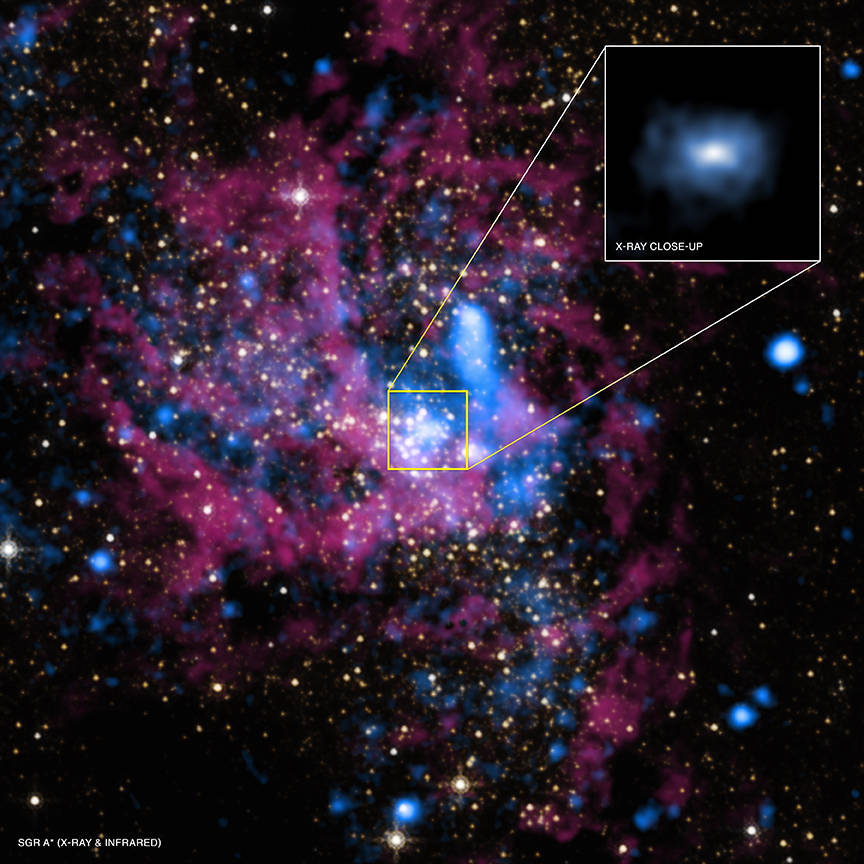
Center of the Milky Way galaxy, with the supermassive black hole Sagittarius A, located in the middle (NASA)
Black holes are regions of space characterized by a large amount of matter compressed into a small area. When its mass is of the order of thousands, or even billions of times greater than the Sun, they are called Supermassive Black Holes. Currently, it is believed that there is a SMBH at the center of all large galaxies, including the Milky Way. The study of the dynamics at the nucleus of galaxies was one of the targets of the Workshop discussions.
Research on gravitational waves was also a topic at the event. This area could contribute in the studies of black holes, as binary systems involving these astronomical bodies emit waves that could be detected directly.
To learn more about the School on Gravitational Waves, click here and read our last post.
“Black holes that are up to several hundred times larger than the sun emit gravitational waves in a frequency that can theoretically be detected in observatories on Earth”, explains Zoltan Haiman, Workshop lecturer and researcher at Columbia University.
Other topics discussed were related to the environment that allows the formation, growth and possible collisions between black holes. To Haiman, the mysteries surrounding these supermassive astronomical bodies and their relationship with the universe are alone great reasons to study the area.
“One of my main motivations to study SMBH is simply the interesting puzzle they represent”, said Haiman. “How the universe was able to compress such a large amount of matter in such a small area, for instance, is still a question for which we do not have a definitive answer”.
Continue Reading | Comments Off on ICTP-SAIFR organizes Workshop on Astrophysics and Relativity
ICTP-SAIFR organiza Workshop em Astrofísica e Relatividade
Dando continuidade à Escola em Ondas Gravitacionais, o ICTP-SAIFR organizou, entre os dias 11 e 15 de agosto, o Workshop em Astrofísica e Relatividade. O evento contou com a participação de muitos dos alunos da Escola anterior, e trouxe ainda diversos pesquisadores internacionais dessas áreas. Entre os principais objetivos do Workshop estavam formar novas colaborações e fortalecer as já existentes. Ondas gravitacionais continuaram em pauta, porém o principal foco das discussões foram os corpos astrofísicos responsáveis por gerá-las, como buracos negros supermaciços, e os ambientes onde eles são encontrados, como o núcleo de galáxias.
“Durante o Workshop, tivemos palestras e sessões de discussão sobre os temas que os próprios participantes elegeram como os mais interessantes”, diz Riccardo Sturani, pesquisador do ICTP-SAIFR e um dos organizadores do Workshop.
Buracos negros
Buracos negros são regiões do espaço caracterizadas por uma grande quantidade de matéria comprimida em uma pequena área. Quando sua massa é da ordem de milhares, podendo chegar a até bilhões, de vezes maior que a do Sol, são chamados de buracos negros supermaciços (ou SMBH, da sigla em inglês Supermassive Black Holes). Atualmente, acredita-se que há um SMBH no centro de todas as grandes galáxias, incluindo a Via Láctea. O estudo da dinâmica no núcleo de galáxias foi um dos alvos de discussões do Workshop.
A pesquisa em ondas gravitacionais também foi tópico no evento. Elas poderiam contribuir nos estudos de buracos negros já que sistemas binários envolvendo esses corpos astronômicos emitem ondas que poderiam ser detectadas diretamente.
Para saber mais sobre a Escola em Ondas Gravitacionais, clique aqui e leia nosso último post.
“Buracos negros de massa até algumas centenas de vezes maiores que a do Sol emitem ondas gravitacionais em uma frequência que, teoricamente, podemos detectar em observatórios na Terra”, explica Zoltan Haiman, palestrante do Workshop e pesquisador da Universidade de Columbia.
Outros temas abordados foram referentes aos ambientes que permitem a formação, o crescimento e possíveis colisões entre buracos negros. Para Haiman, apenas os mistérios que envolvem esses corpos astronômicos supermaciços e sua relação com o universo é estímulo suficiente para estudar a área.
“Uma das minhas principais motivações para estudar SMBH é simplesmente o interessante mistério que eles representam”, diz Haiman. “Como o universo conseguiu comprimir uma quantidade tão grande de matéria em uma região tão pequena, por exemplo, ainda é uma questão para a qual não temos uma resposta definitiva”.
Continue Reading | Comments Off on ICTP-SAIFR organiza Workshop em Astrofísica e Relatividade
ICTP-SAIFR organizes School on Gravitational Waves
In September, the LIGO (Laser Interferometer Gravitational – Wave Observatory) project will begin its experiments to detect, for the first time in a direct way, gravitational waves. Member of this international collaboration, ICTP-SAIFR researcher Riccardo Sturani was one of the organizers of the School on Gravitational Waves, held at the institute between the 3rd and 11th of August. During the event, students from several countries of South America watched lectures on this recent area of physics, that should gain more prominence in the upcoming years with the start of the LIGO activities.
“As these waves have not yet been detected directly, we have little data and few people who work with it in South America”, says Sturani. “The aim of the School was to promote the area. Through lectures, exercises and discussions, we addressed both theoretical and practical aspects, such as data analysis techniques”.
The School brought together several renowned international researchers of the area here http://samedayessays.org/essay-writer/, such as Alessandra Buonanno (Max Planck Institute, Potsdam, Germany), Stefano Foffa (University of Geneva, Italy), Sergej Klimenko (University of Florida, USA), Enrico Ramirez -Ruiz (University California-Santa Cruz, USA) and Walter Del Pozzo (University of Birmingham, UK).
Gravitational waves
All bodies that have mass generate gravitational waves when they move. These waves propagate through essay writing services space as a wave propagates in water, but are extremely weak. Only systems with large amounts of matter, such as ones consisting of black holes, for instance, can produce measurable gravitational waves. So far, its existence was confirmed only indirectly by measuring the energy emitted in the form of waves.
In a simplified way, LIGO’s idea to detect them directly is based on a system of lasers and mirrors. When passing through the system, a wave will change the amount of time a laser takes to get to a mirror, reflect and go back to a detector. Data analysis techniques for this type of experiment for buy essays online, as Sturani explains, need to be specific.
“Unlike many other areas of physics, our experiments have more noise than real signals”, says the researcher. “In my lectures, I talked about methods that can be used in such situations”.
The direct detection of gravitational waves would allow, for example, the study of astronomical bodies that don’t emit light, but emit these waves. “Our expectations is that gravitational waves will be detected by LIGO in the next two or three years”, says Sturani.
Continue Reading | Comments Off on ICTP-SAIFR organizes School on Gravitational Waves
ICTP-SAIFR realiza Escola em Ondas Gravitacionais
No mês de setembro, o projeto LIGO (Laser Interferometer Gravitational – Wave Observatory) começará seus trabalhos para tentar detectar, pela primeira vez de maneira direta, ondas gravitacionais. Membro dessa colaboração internacional, o pesquisador Riccardo Sturani, do ICTP-SAIFR, foi um dos organizadores da Escola em Ondas Gravitacionais, realizada no instituto entre os dias 3 e 11 de agosto. Durante o evento, os alunos, provenientes de diversos países da América do Sul, tiveram palestras sobre essa recente área da Física que deverá ganhar mais destaque nos próximos anos com o início das atividades do LIGO.
“Como essas ondas ainda não foram detectadas diretamente, temos poucos dados e poucas pessoas que trabalham com isso na América do Sul”, diz Sturani. “O intuito da Escola foi divulgar a área. Através de aulas, exercícios e discussões, abordamos desde aspectos teóricos até práticos, como técnicas de análise de dados”.
A Escola contou com a presença de diversos pesquisadores internacionais de ponta na área, como Alessandra Buonanno (Instituto Max Planck, Potsdam, Alemanha), Stefano Foffa (Universidade de Geneva, Itália), Sergej Klimenko (Universidade da Flórida, EUA), Enrico Ramirez-Ruiz (Universidade Califórnia-Santa Cruz, EUA) e Walter Del Pozzo (Universidade de Birmingham, Reino Unido).
Ondas Gravitacionais
Ao se moverem, todos os corpos que têm massa produzem ondas gravitacionais. Essas ondas se propagam pelo espaço assim como uma onda se propaga na água, porém são muito fracas. Apenas sistemas com grande quantidade de matéria, como aqueles constituídos por buracos negros, por exemplo, conseguem produzir ondas gravitacionais detectáveis. Até o momento, sua existência foi confirmada apenas indiretamente, pela energia que é emitida em forma de ondas.
Explicando de maneira simplificada, a ideia do LIGO para detectá-las diretamente é baseada em um sistema de lasers e espelhos. Ao passar pelo sistema, uma onda deverá alterar o tempo que um laser leva para ir até um espelho, ser refletido e voltar a um detector. As técnicas de análise de dados para esse tipo de experimento, como explica Sturani, precisam ser específicas.
“Diferente de muitas outras áreas da Física, nossos experimentos possuem mais ruídos do que sinais verdadeiros”, afirma o pesquisador. “Em minhas palestras, falei sobre métodos que podem ser utilizados em situações como essas”.
A detecção direta de ondas gravitacionais permitiria, por exemplo, o estudo de corpos astronômicos que não emitem luz, mas que emitem essas ondas. “Nossa expectativa é que ondas gravitacionais sejam detectadas diretamente pelo LIGO nos próximos dois ou três anos”, diz Sturani.
Continue Reading | Comments Off on ICTP-SAIFR realiza Escola em Ondas Gravitacionais
ICTP-SAIFR organizes School on QCD and LHC Physics
The Particle Physics area is living a year of expectations with the start of the second run of the Large Hadron Collider (LHC), the largest particle accelerator in the world. In addition to study further the Higgs Boson, one of the main goals of the LHC is to detect new particles, which would mean the existence of a Physics beyond the Standard Model. These were some of the reasons why ICTP-SAIFR held the “School on QCD and LHC Physics“. Between July 22nd and 31nd, the event discussed topics related to the field of Quantum Chromodynamics and Particle Physics. The School was proposed and organized by important names of these fields, such as David Kosower (Saclay), Daniel de Florian (Universidad de Buenos Aires), Fernando Cordero (University of Freiburg) and Rogério Rosenfeld (ICTP-SAIFR).
“One of the merits of the School was to bring together top scientists from around the world to talk about their specialties”, says Gavin Salam, CERN researcher and one of the lecturers of the event.
QCD
Quantum Chromodynamics, or QCD, studies the phenomena related to the Strong Force – responsible for the interactions between quarks and gluons. The area is called QCD due to the fact that these particles have a property, similar to electric charge, that instead of two types (positive and negative) is observed in three types – which were denominated red, green and blue.
“QCD has been around for about 40 years, but there was a huge growth of interest in this area in the last decade”, says Salam. “The LHC and their findings provided great motivation for studies in QCD. My lectures introduced the main ideas related to this area and to the physical principles and processes of the interactions between quarks and gluons”.
Moreover, Salam stressed that studies in QCD are also related to other areas of physics. “The mathematics involved in these researches can be applied to Field Theory, for example. So contributions in one of these areas may have significant impact on the studies of the other”.
LHC
“The LHC works as an extremely powerful microscope,” says Kosower.
By colliding protons, the particle accelerator allows studies on scales thousands of times smaller than the atom. Understanding what happens in these collisions, however, requires complex calculations. Increasing the accuracy of these calculations, which are often based in approximations, is one of the challenges of Kosower’s area. The physicist, recipient of the J. J. Sakurai Prize for Theoretical Particle Physics in 2014, made significant contributions to the area and spoke about Higher-Order Calculations at the School.
“We aim to make predictions about the probabilities of certain events occurring after the collisions and to better understand what happens in this subatomic universe,” he said.
In this second run, one of LHC’s major goals is to study the Higgs Boson in greater detail. “In the first run of LHC experiments, our calculations were limited because of statistics – few Higgs Bosons were produced. Now, with increased power and luminosity, the LHC will be able to produce and detect a much larger amount of Bosons, which will allow more detailed studies of this particle”.
Among other objectives of the LHC is to discover new particles, not predicted by the Standard Model. If this happens, it would mean the existence of a Physics beyond the Standard Model.
“The most interesting and exciting result, in my opinion, would be the discovery of something new, not predicted,” says Kosower. “But for now, we can’t know what will happen. Maybe new particles will be detected, maybe not. With a record energy of 13TeV, we will be looking at a so far unknown territory”.
Continue Reading | Comments Off on ICTP-SAIFR organizes School on QCD and LHC Physics
ICTP-SAIFR realiza Escola em Física do LHC e QCD
A área de Física de Partículas vive um ano de expectativas com o início da nova etapa de coleta de dados do Large Hadron Collider (LHC), maior acelerador de partículas do mundo. Além de aprofundar os estudos sobre o Bóson de Higgs, o LHC tem como um de seus objetivos detectar uma nova partícula, o que significaria a existência de uma Física além do Modelo Padrão. Esses foram alguns dos motivos pelos quais o ICTP-SAIFR realizou a “School on QCD and LHC Physics”. Entre os dias 22 e 31 de julho, o evento debateu tópicos relacionados ao campo da Cromodinâmica Quântica e à Física de Partículas do LHC. A Escola foi proposta e organizada por importantes nomes dessas áreas, como David Kosower (Saclay), Daniel de Florian (Universidad de Buenos Aires), Fernando Cordero (Universidade de Freiburg) e Rogério Rosenfeld (ICTP-SAIFR).
“Um dos méritos da Escola foi reunir cientistas de ponta do mundo inteiro para falar sobre suas especialidades”, diz Gavin Salam, pesquisador do CERN e palestrante do evento.
QCD
A área chamada de Cromodinâmica Quântica (ou QCD, da sigla em inglês Quantum Chromodynamics) estuda os fenômenos relacionados à Força Forte – aquela responsável pelas interações entre quarks e glúons. Ela é chamada assim devido a uma característica dessas partículas, similar à carga elétrica, que em vez de dois tipos (positivo e negativo), é observada em três tipos – denominados vermelho, verde e azul.
“A QCD existe há cerca de 40 anos, porém houve um grande crescimento de interesse nessa área na última década”, afirma Salam. “O LHC e suas descobertas forneceram uma grande motivação para os estudos em QCD. Minhas palestras introduziram as principais ideias relacionadas a essa área e aos processos e princípios físicos das interações entre quarks e glúons”.
Além disso, Salam ressaltou que estudos em QCD estão relacionados também com outras áreas da Física. “Ás vezes, a matemática envolvida nessas pesquisas pode ser aplicada em Teoria dos Campos, por exemplo. Assim, descobertas em uma dessas áreas podem dar contribuições significativas para os estudos da outra”.
LHC
“O LHC funciona para nós como um microscópio extremamente potente”, diz Kosower.
O acelerador de partículas, ao colidir prótons, permite o estudo de partículas em escalas milhares de vezes menores do que a do átomo. Entender o que acontece nessas colisões, entretanto, requer cálculos complexos. Aumentar a precisão desses cálculos, feitos muitas vezes baseados em aproximações, é um dos desafios da área de Kosower. O físico, vencedor do Prêmio J. J. Sakurai para Física de Partículas Teórica em 2014, fez contribuições significativas para a área e falou sobre Cálculos de Ordem Superior na Escola.
“Buscamos fazer previsões sobre as probabilidades de determinados eventos ocorrerem após as colisões e entender melhor o que acontece nesse universo subatômico”, disse ele.
Nessa segunda etapa de coleta de dados, um dos principais objetivos do LHC é aprofundar os estudos sobre o Bóson de Higgs, descoberto pelo acelerador em 2012. “Na primeira fase de experimentos do LHC, nossos estudos ficaram limitados por conta da estatística – conseguimos produzir poucos Bósons de Higgs. Agora, com maior energia e luminosidade, o LHC irá produzir e detectar uma quantidade muito maior de Bósons, o que permitirá estudos mais detalhados dessa partícula”.
Entre outros objetivos do LHC está descobrir novas partículas, não previstas pelo Modelo Padrão. Caso aconteça, isso significaria a existência de uma Física além do Modelo Padrão.
“O resultado mais interessante e mais empolgante, na minha opinião, seria a descoberta de algo novo, não previsto”, diz Kosower. “Mas, por enquanto, não há como saber o que irá acontecer. Talvez nenhuma nova partícula seja descoberta, talvez sim. Com a energia recorde do LHC de 13TeV, vamos olhar para um território até agora desconhecido”.
Continue Reading | Comments Off on ICTP-SAIFR realiza Escola em Física do LHC e QCD
